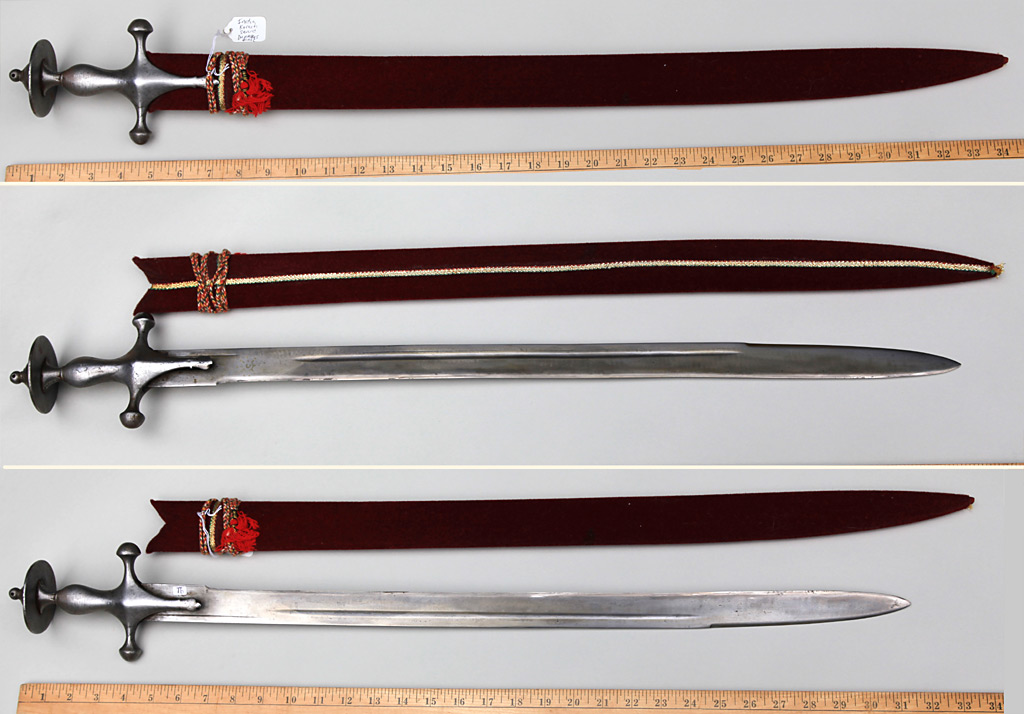

The name kirach (kiresh, kirich, kirch) refers to a relatively rare form of Indian sword with a single-edged blade that is straight or with a shallowly concave cutting edge (a blade curved slightly forward towards the tip); Rawson (1968) attributes development of this style to the Marathas and notes it is expected to be found with a Hindu basket hilt, though later publications also include examples with Indo-Persian style hilts as well, such as this example with a delhishahi form hilt. The undecorated hilt on this example appear to be have been cast of iron with mold line imperfections on the edges along the plane of the blade and at the root of the quillions. One quillion appears to have been partially cracked. The 27 3/16 inch long blade is concave along the cutting edge by about a quarter of an inch and convex along the back by less. A 2 5/16 inch ricasso lies under the langets and there is a short narrow fuller near the back in the forte of the blade and a wider fuller about 15 inches in length centrally on both faces of the blade. A 7 inch back edge extends to a fairly symmetrical tip. Patterns emerge from manipulation of contrasting layers of the blade steel. A brass inlaid 'sunburst' device is present on one side of the blade. Lew's notes indicate the sword to be circa 1840. The maroon velvet covered scabbard is modern.







